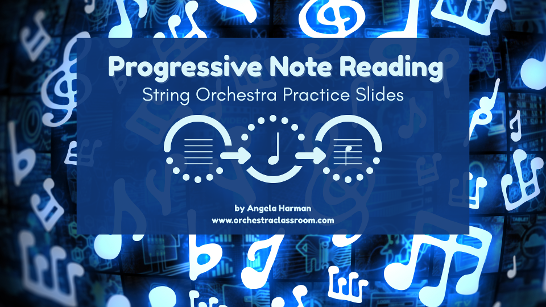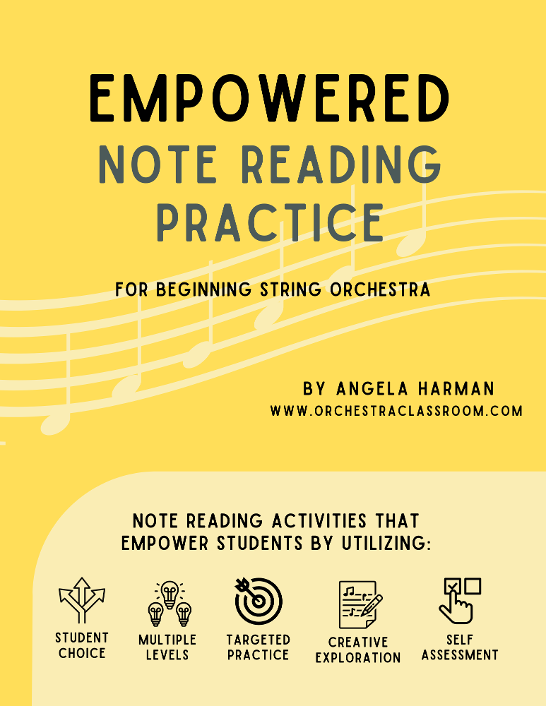About Me:

My name is Angela Harman and I am currently a full time orchestra teacher in Mapleton, Utah. I am passionate about music education and have taught orchestra in Utah’s Nebo School District for 15 years. In each of the schools where I have taught, I have successfully grown the orchestra programs by over 400% . It has been an honor to receive several awards, including: Give A Note Tour and Ardy from Radio Disney and the Give a Note foundation in 2016, Superior Accomplishment Award from the Utah Music Educators association in 2017, and the 2020 Best of State in public music education from bestofstate.org.
I enjoy presenting and have presented at the NAfME National Conference in 2015, 2016, and 2017. I have also presented for the UMEA conference , Rocky Mountain Strings Academy, OKMEA conference, NMMEA conference, ASTA National conference, and many more.
If you would like to book me for your next conference as a keynote speaker or presenter, contact me for availability!
Orchestra Classroom Ideas and Products
Your source for awesome ideas and time-saving printable resources.
THIS JUST IN!

This warm up book is perfect for many skill levels. There are ways to differentiate each exercise so all students can succeed as they master scales, fingerings, intonation, bowing, time signatures, and key signatures from 2 sharps to 2 flats.
Check out the many ways to utilize this book as your daily warm-up:
Help students learn the scales by having them play ONLY the first note in each measure. You can have them hold the first note as a whole note, or have them play the rhythm of each measure on the scale pitch (first note). If you have students who struggle, you might allow them to play only the first note of each measure while the class plays the other notes.
Divide the orchestra into 2 groups. You can group students a few different ways:
1. By section - violins in one group and viola, cello, bass in another.
2. By row - alternate rows for each group.
3. By stand partner - one person in group 1 and one person in group 2.
Once students are groups, assign various ways to practice the sequence:
Group 1 plays only the first note, group 2 plays as written
Group 1 plays measure 1 as written, then group 2 echos measure 1, etc.
Group 1 plays measure 1, group 2 measure 2, etc.
Add challenge and difficulty by asking students to practice the bowing suggestions. You might have more advanced students play challenging bowings while others play the sequence as written. When experimenting with bowing, you can experiment with starting down bow or up bow. Add bow lifts as desired.
There are rhythm variations to help students get the feel of the sequence in different time signatures. Once students have mastered the rhythms, you could have students create bowings for those variations. You could also use
the rhythm variation stems for students to create a composition or develop improv skills by coming up with ideas as to what could come next. If students struggle because the rhythms stems do not show the entire variation, have them write it out. It’s great practice!
After each sequence, there is a challenge activity for students to create their own variation or experiment with technique. By completing the challenges, students develop their creativity, composition, and improv skills

Over 300 google slides for students to practice note reading! The secret to get students to read notes is to have students practice reading notes and they need LOTS of different excerpts. Some students try to memorize passages or guess the notes. This resource provides many examples in custom categories for you to tailor note reading practice to suit the needs of your students.
There are so many ways to use this resource. Here are just a few of the ideas suggested the download: (11 more ideas inside!)
- Project on screen for daily warm-ups. Use a metronome if you like and switch slides on the rest at the end of each line. When projecting on screen, you can ring a bell to have students freeze to check to see if they are all on the correct note.
- Challenge students to play the slides WITHOUT looking at their fingers. Teach them they can adjust pitch for intonation without looking. At all times, eyes on the notes!
- Use slides to work on intonation. Listen (or have a student come to the front to listen) and circle notes that were out of tune. Ask students to unify tone and adjust intonation.
- Change the rhythms! Students can practice doubles, swing, dotted notes…etc.
- Every time students see a rest, they check their bow hand, or check their left hand placement.

Worksheets are great for helping students learn their notes, but reading/writing notes is only the first step on the road to mastery. Students need to PRACTICE note reading using their instruments using a step by step process. In recent years, I have done a lot of research about grading, assessment, and student motivation. Empowered Note Reading Practice was created with this important research in mind. Since all students learn at different rates and have varying music experience in their backgrounds, it is important to provide choice. I have created multi-level parts so students can choose their path. It also provides a way for students to challenge themselves. This resource includes embedded self reflection and assessment questions for students to take on ownership for their learning. Use this during class time as a 5-10 minute note reading activity for students to complete under your direction. Model the skills/notes on each page and let students work through the process. They can also work with stand partners to help assess their playing. After students complete the activity, the entire class can practice the exercises together. Preview the 45 page violin book HERE!
Need a presenter for your next music teacher conference?
Prepared Orchestra Sessions for Music Education Conferences:
These are just some of the sessions I have presented at conferences all over the US. You may contact me for availability to present at your conference: angela.harman@orchestraclassroom.com
"Get A Life! - Music Teacher Survivor Guide: how to maintain momentum and avoid burn-out"
"Taming the Middles: classroom management strategies for middle school orchestra"
"Shifting Isn't Scary: developing shifting skills in beginners"
"The Art of Intrinsic Motivation: help students buy-in to music making"
"Step Up Your Game: troubleshoot all your rehearsal challenges through strategic games"
"No More Playing Tests: Transitioning to meaningful student-led assessment practices "
"Top Tech Hacks: How to create your own resources"
"No More Beginners Blues: Tips for making your beginning orchestra class irresistibly fun while still focusing on good pedagogy"
"Talent Doesn’t Grow on Trees…It Grows in Orchestra!: Motivating and inspiring students to practice using fun and creativity"
"Orchestra Gives You Wings! How to propel student learning for a flying start"
"TEN Strategies to Help Your Beginners Start Strong... Tips and tricks to help your beginners learn better and faster."
"How to Recruit Like a Pro... How to sell your program and help it thrive."
"Re-energized Rehearsals... Keep students engaged and wanting more after every rehearsal"